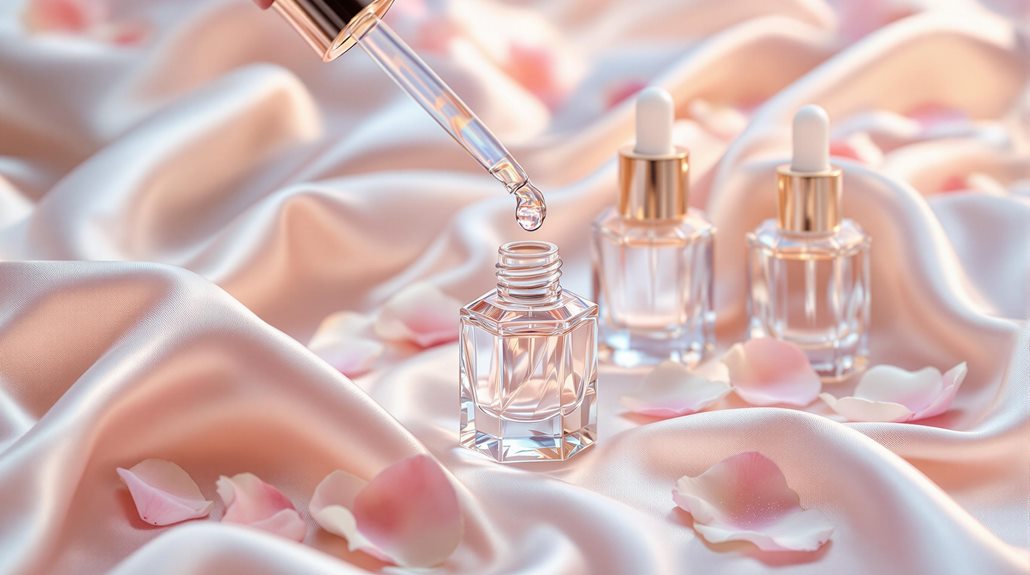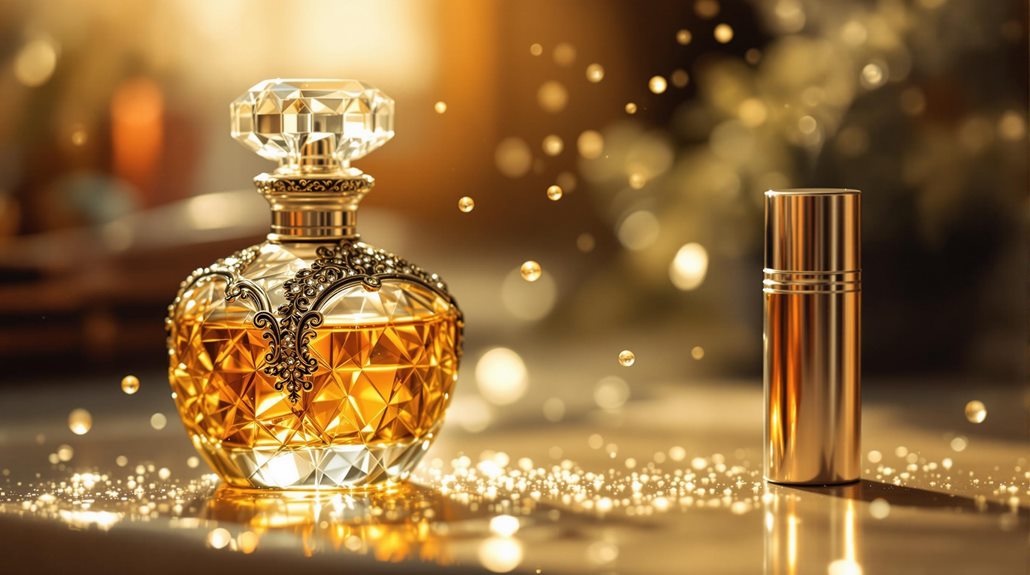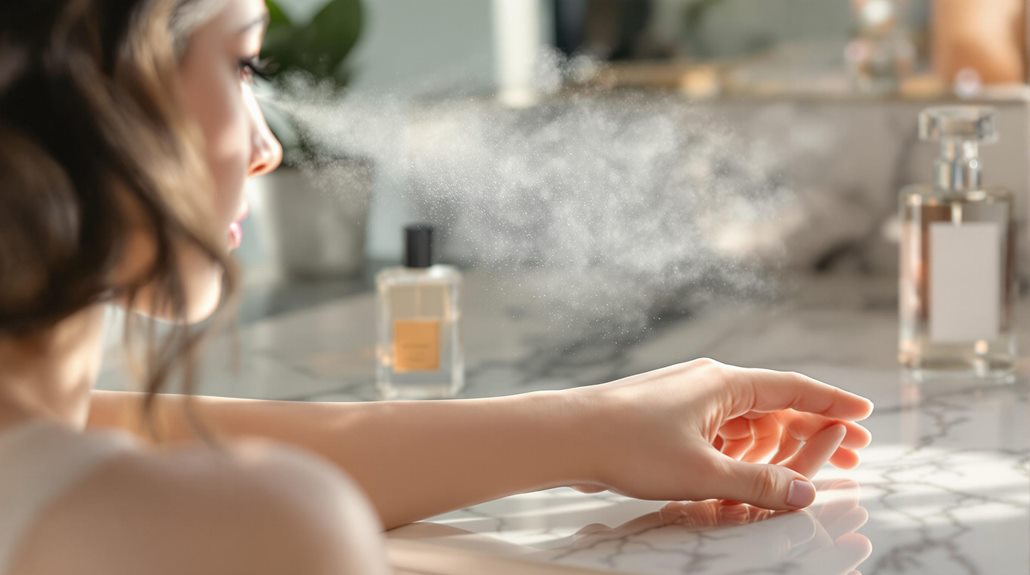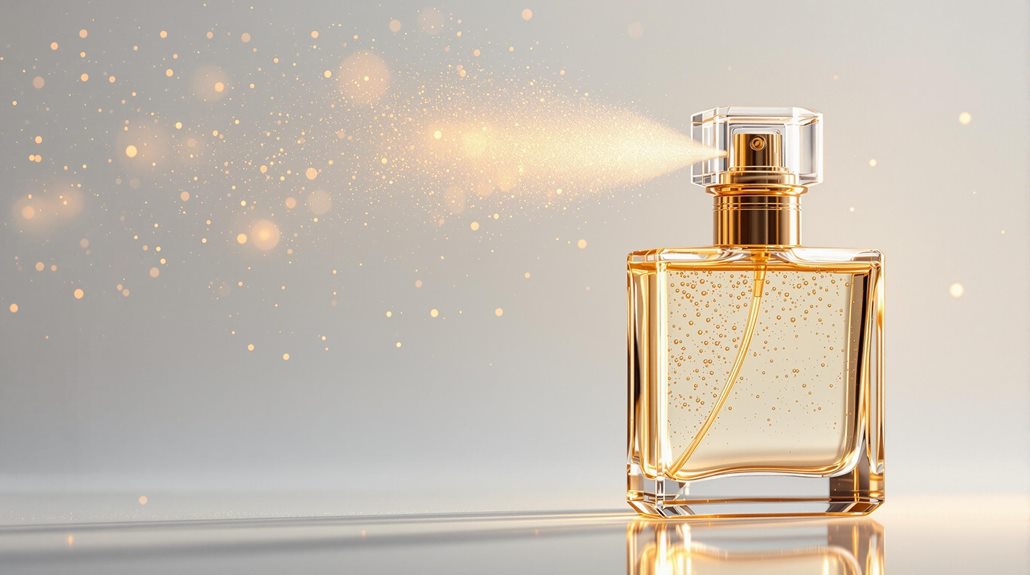Why Is Perfume So Expensive? Understanding the Cost of Fine Fragrances
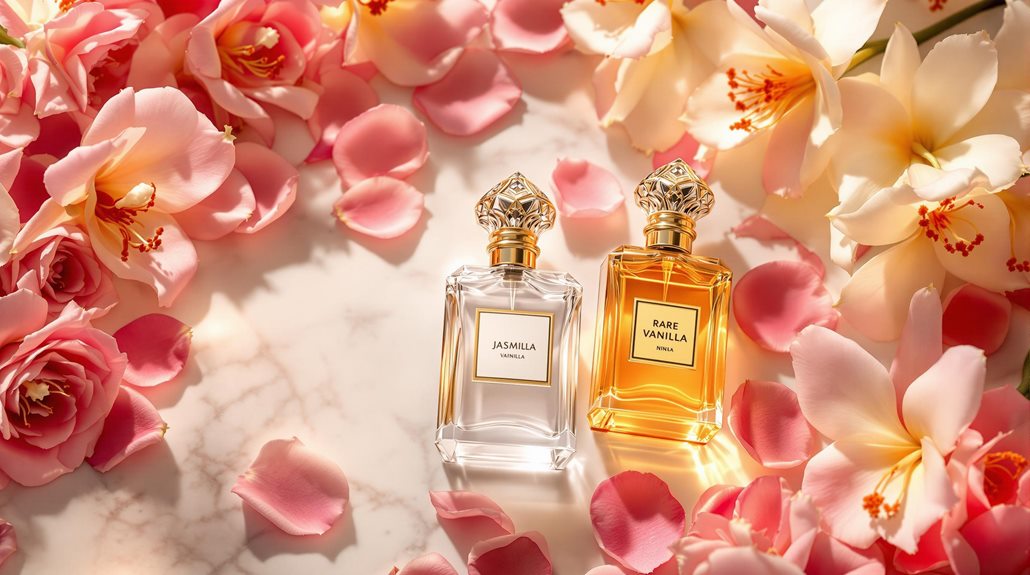
Luxury perfumes come with hefty price tags due to several key factors working together. You'll find rare natural ingredients like Bulgarian roses and jasmine that require labor-intensive harvesting and processing. The creation process itself takes 6-18 months of meticulous development by expert perfumers who spend years perfecting their craft. Expensive packaging, from Baccarat crystal bottles to gold accents, adds to the cost. Major brands also invest heavily in celebrity partnerships and marketing campaigns to maintain their prestigious image. Factor in research and development costs, plus the exclusivity of niche market fragrances, and you'll uncover there's much more behind that refined bottle than meets the eye.
Rare Essences and Natural Ingredients
When you smell an expensive perfume, you're experiencing some of the world's most precious and hard-to-obtain natural ingredients. Each rare flower and botanical essence that goes into creating these Luxury Perfume formulations requires specialized growing conditions and painstaking harvesting techniques to preserve their delicate aromatic properties.
Consider the raw materials like Bulgarian roses, where it takes thousands of flowers to produce just one ounce of essential oil, or jasmine, which must be hand-picked at dawn when its fragrance is most potent. The extraction of these expensive ingredients often involves labor-intensive processes that can't be rushed or automated, directly impacting the hefty price of the final product.
Even more exclusive components like ambergris and oud contribute to why luxury fragrances command such high prices. These rare substances aren't just costly because they're hard to find – they require extensive refinement and expert handling to convert them into usable fragrance elements. Expert perfumers then spend countless hours experimenting with these precious materials to create unique formulations that justify their premium pricing in the market.
The Art of Perfume Creation
Beyond the rarity of ingredients, the true magic of perfume lies in the skilled hands of elite perfumers. These master perfumers, often called "noses," dedicate years to honing their craft, transforming simple ingredients into complex Eau de Parfums, Eau de Toilette, and Eau de Cologne formulations that captivate your senses.
The creation process is remarkably intricate, requiring:
- Hundreds of trial iterations to achieve the perfect balance between top, middle, and base notes
- 6-18 months of meticulous refinement for each new fragrance
- Countless hours of testing to guarantee the scent remains stable and true to vision
You're not just paying for perfume ingredients when you purchase a high-end fragrance - you're investing in the artistry and specialized knowledge of master perfumers who blend science with creativity. Their proficiency drives innovation in ingredient technology and formulation techniques, contributing to the premium pricing of fine fragrances. The intellectual property rights that protect these unique formulations further add to the cost, ensuring that each bottle you purchase represents years of development, mastery, and artistic vision.
Research and Development Costs
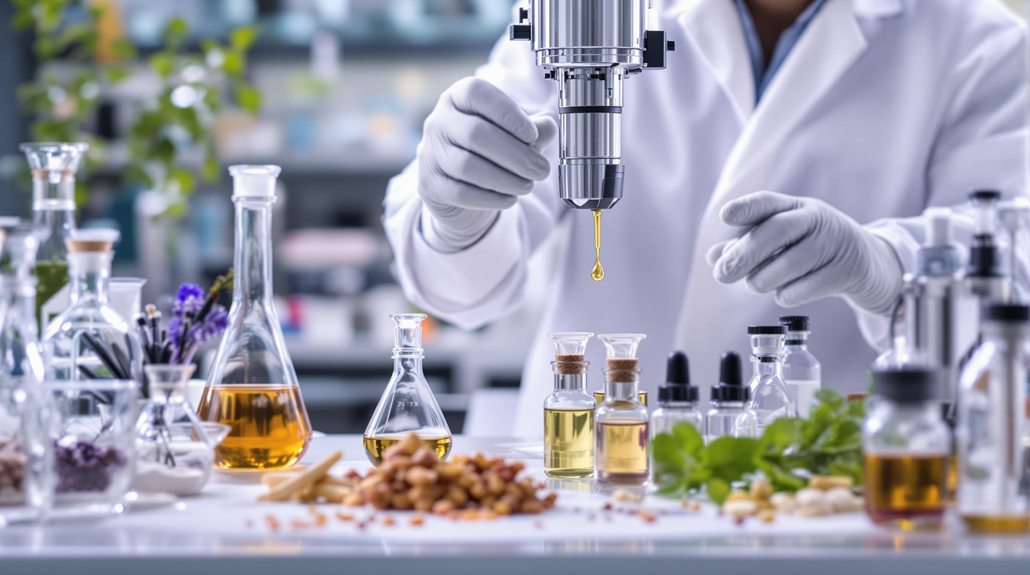
The extensive research and development behind each perfume represents one of the largest cost drivers in fragrance creation. When you're purchasing higher-priced Eau de Parfums, you're not just paying for what's in the bottle - you're investing in years of scientific innovation and skill that went into developing that unique scent.
What makes fragrances so expensive is the substantial investment companies make in their R&D departments. It can take up to 18 months and hundreds of iterations to perfect a single Luxury fragrance, with teams of skilled perfumers working tirelessly to achieve the right balance. The Price you pay reflects this painstaking process, as well as the sophisticated technology used to create and test new formulations.
You'll find that the cost of perfumes is also influenced by intellectual property protection. Fragrance companies invest heavily in patenting their unique formulas and innovative techniques. With the global fragrance market exceeding $40 billion and growing steadily, these companies continue to pour resources into developing new scent technologies and formulations, ultimately passing these development costs on to consumers through their premium products.
Luxurious Packaging and Design
Alongside the exquisite fragrances themselves, luxury perfume packaging plays an essential role in justifying premium prices. When you purchase an expensive fragrance, you're not just buying a scent - you're investing in a work of art that's meant to be displayed and admired. Prestige fragrances often feature Baccarat crystal bottles, solid gold accents, and precious stones that transform each perfume bottle into a luxurious statement piece.
The world's most expensive fragrances showcase their artistry through:
- Hand-crafted crystal bottles with intricate cuts and patterns that catch and reflect light
- Precious metal embellishments and rare gemstones carefully positioned to enhance the bottle's design
- Custom-made leather cases and velvet-lined presentation boxes that heighten the unboxing experience
Limited edition releases take this luxury even further, with renowned artists and designers creating unique bottle designs that become instant collectors' items. You'll find that these artistic elements aren't just superficial additions - they're integral to the overall experience of luxury perfumes. The bottle's design and packaging create a visual and tactile expedition that begins long before you experience the fragrance itself.
Brand Power and Market Positioning
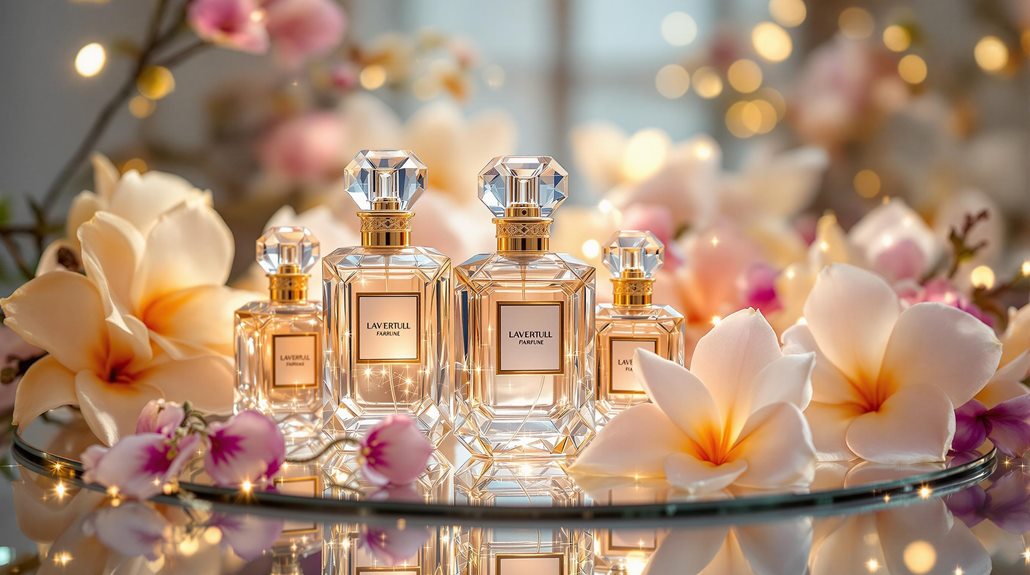
Prestigious branding power stands behind every luxurious bottle and drives perfume prices even higher. When you're purchasing a high-end fragrance, you're not just buying the scent - you're investing in the brand's reputation and exclusivity that companies like LVMH have carefully cultivated over decades.
Expensive perfumes from luxury houses often come with elaborate marketing campaigns that position them as status symbols. These campaigns, featuring celebrities and renowned designers, contribute considerably to the final cost. Take de Baccarat crystal bottles, for instance - they're not just containers; they're statements of luxury that command premium pricing.
While some might argue that a higher percentage of fragrance oils justifies the cost, it's often the brand positioning that determines the price point. Luxury fragrance houses understand that consumers will pay more for scents associated with prestigious names. This is evident in LVMH's €5.2 billion revenue from their Perfumes & Cosmetics division in 2020. The percentage of fragrance oils might be similar between mid-range and luxury perfumes, but you're paying for the brand's market position, exclusive distribution channels, and the perceived value that comes with owning a luxury fragrance.
Marketing and Celebrity Partnerships
Behind every successful luxury fragrance lies an intricate web of marketing strategies and star-studded partnerships. When you're paying for premium perfumes, a significant portion of the price tag covers extensive marketing efforts and celebrity collaborations that help establish the brand's prestige. The perfume industry relies heavily on creating an aura of luxury and exclusivity around their products, and they achieve this through:
- Multi-million dollar advertising campaigns featuring A-list celebrities in exotic locations
- High-profile fashion event sponsorships that associate upscale fragrances with luxury lifestyle
- Strategic partnerships with prestigious fashion houses and influential personalities
These marketing efforts play a significant role in shaping your perception of the fragrance's value. You're not just buying a scent; you're investing in the carefully crafted image that comes with it. The high cost of securing celebrity endorsements and maintaining partnerships with fashion events directly impacts the cost of perfumes. When you consider that brands must consistently maintain their premium positioning through ongoing marketing initiatives, it's easier to understand why luxury fragrances command such substantial price points in the market.
Fragrance Concentration and Performance
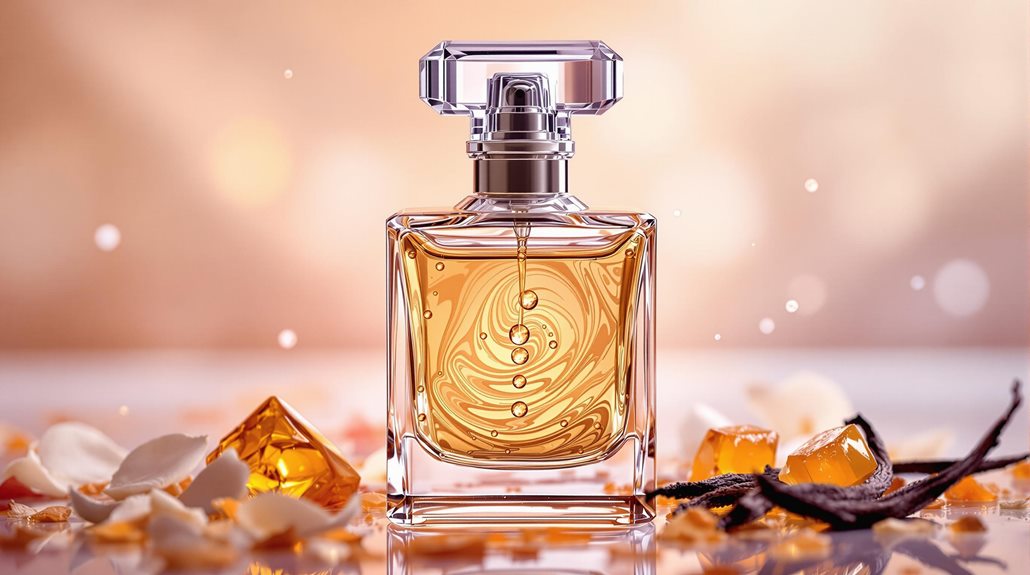
A perfume's concentration level directly influences both its price and performance on your skin. The higher the concentration of fragrance oils, the more you'll pay - but you'll also enjoy longer-lasting scents. Eau de Toilette contains 5-15% fragrance oils, while Eau de Parfum offers a more potent 15-20% concentration. If you're seeking the ultimate in longevity, Pure Parfum/Extrait contains 20-30% fragrance compounds and can last eight hours or more.
Your skin type plays an essential role in how fragrances perform. If you have dry skin, you'll notice faster fragrance absorption, but applying moisturizer beforehand can help extend wear time. The fragrance family you choose also matters - oriental and woody scents typically outlast lighter citrus or floral options due to their heavier molecular structure.
The higher cost of concentrated perfumes isn't just about the increased quantity of fragrance oils. Specialized production techniques are necessary to properly blend and stabilize these concentrated formulations. This combination of premium raw materials and sophisticated manufacturing processes explains why higher concentration fragrances command premium prices in the market.
Niche Market Exclusivity
Niche perfumeries' limited production runs and specialized formulations create an air of exclusivity that greatly drives up prices. When you're purchasing from niche fragrance brands, you're not just buying a scent - you're investing in rarity and uniqueness that mass-market fragrances can't offer.
The scarcity and rarity of artisanal perfume creations contribute immensely to their premium pricing. You'll find that these exclusive fragrances are often produced in small batches, allowing perfumers to maintain strict quality control and create distinctive scents that stand out in today's crowded market.
Consider these key aspects that make niche fragrances command higher prices:
- Personalized fragrance consultations where expert perfumers guide you through bespoke scent creation
- Limited production runs of 500-1000 bottles per batch, compared to millions for mainstream brands
- Specialized formulations using rare, high-quality ingredients sourced from specific regions
The collectible nature of these exclusive fragrances creates a dedicated following among perfume enthusiasts. When you invest in niche market perfumes, you're not just paying for the scent - you're accessing a world of artisanal craftsmanship and exclusivity that justifies their premium positioning.
Conclusion
When you're paying premium prices for fine fragrances, you're investing in more than just scented liquid. You're supporting years of artistry, rare ingredients, careful formulation, and innovative design. From the perfume creator's expertise to the luxurious packaging and powerful marketing campaigns, every aspect contributes to the final cost. While it may seem steep, you're buying into an intricate world of olfactory artistry and exclusivity.

